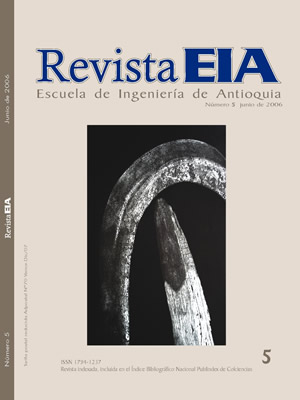IMPACTOS DE LAS CARRETERAS SOBRE LA FAUNA SILVESTRE Y SUS PRINCIPALES MEDIDAS DE MANEJO
IMPACTOS DE LAS CARRETERAS SOBRE LA FAUNA SILVESTRE Y SUS PRINCIPALES MEDIDAS DE MANEJO


This work is licensed under a Creative Commons Attribution-NonCommercial-NoDerivatives 4.0 International License.
Copyright statement
The authors exclusively assign to the Universidad EIA, with the power to assign to third parties, all the exploitation rights that derive from the works that are accepted for publication in the Revista EIA, as well as in any product derived from it and, in in particular, those of reproduction, distribution, public communication (including interactive making available) and transformation (including adaptation, modification and, where appropriate, translation), for all types of exploitation (by way of example and not limitation : in paper, electronic, online, computer or audiovisual format, as well as in any other format, even for promotional or advertising purposes and / or for the production of derivative products), for a worldwide territorial scope and for the entire duration of the rights provided for in the current published text of the Intellectual Property Law. This assignment will be made by the authors without the right to any type of remuneration or compensation.
Consequently, the author may not publish or disseminate the works that are selected for publication in the Revista EIA, neither totally nor partially, nor authorize their publication to third parties, without the prior express authorization, requested and granted in writing, from the Univeridad EIA.
Show authors biography
El objetivo de este artículo es presentar el impacto de los proyectos viales sobre la fauna silvestre y evaluar las medidas de manejo de estos efectos. Se revisó y analizó la información de diversos estudios realizados en el mundo, al igual que algunos estudios de impacto ambiental de carreteras que se han desarrollado en Antioquia. Se encontró que los principales impactos son el atropellamiento, el aislamiento de poblaciones y el cambio en los patrones reproductivos de la fauna; esto trae como consecuencia la disminución de las poblaciones de especies de fauna silvestre. También se plantean las estrategias comúnmente implementadas para el manejo de los impactos.
Abstract: The purpose of this paper is to present the impact of roads on wildlife and to evaluate the ways to manage these impacts. various foreign articles and studies were analyzed as well as environmental impact studies of roads developed in Antioquia. As a result of this study it was found that the main impacts were roadkills, population isolation, and changes in reproductive patterns. The above impacts have the overall consequence of diminishing the populations of fauna. The management strategies to overcome these impacts are discussed as well.
Article visits 1479 | PDF visits 996
